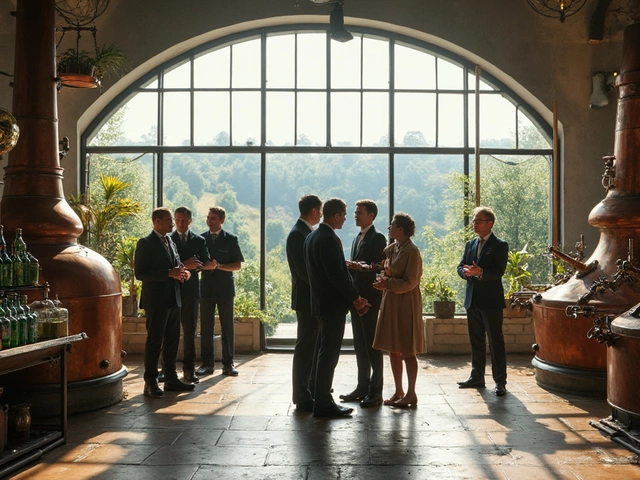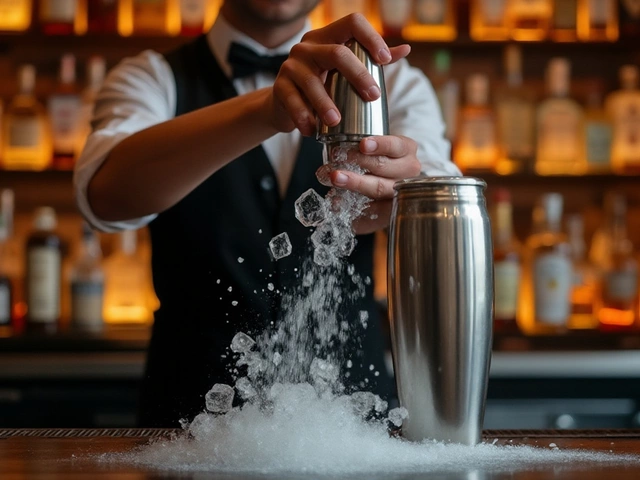100-Year-Old Gin – What Makes a Century‑Old Spirit Special?
If you’ve ever wondered what a gin that’s been around for a hundred years actually tastes like, you’re not alone. Most people think of gin as a fresh, botanical‑heavy drink, but when it sits for a century, it changes in ways you can actually taste. In this guide we’ll break down how a gin can age that long, what flavors to expect, and how to handle the bottle so you get the best experience.
How Does Gin Even Age for 100 Years?
Unlike whiskey or brandy, gin isn’t usually put in wood barrels because the botanicals can get lost. The few historic gins that have survived a hundred years were stored in neutral containers – often glass or stainless steel – in cool, dark cellars. Over time, oxidation and slow chemical reactions mellow the sharp juniper bite and bring out deeper, earthy notes. Think of it like a wine that’s been left to breathe for decades: the harsh edges soften, and subtle spices rise to the surface.
One of the biggest factors is storage temperature. A stable, low temperature (around 55‑60°F or 13‑15°C) slows down the reaction rate, preserving delicate aromas. Light is another enemy; UV rays can break down aromatic compounds, so historic bottles were usually kept in dark cupboards or wrapped in cloth.
Tasting a 100-Year-Old Gin – What to Expect
When you finally crack open a century‑old gin, the nose hits you with a mellow blend of dried herbs, leather, and a whisper of oak if the bottle ever touched wood. The usual citrus pop you find in modern gins is muted, replaced by richer flavors like dried orange peel, earthy root vegetables, and a faint hint of smoke. On the palate, it’s smoother, with a silky mouthfeel that feels almost like sipping a fine sherry.
Don’t rush the first sip. Let the spirit sit in the glass for a minute so the aromas can fully develop. Swirl gently, inhale, then taste. You’ll notice the juniper still there, but it’s more of a background character supporting the aged botanicals. If you’re curious about how it holds up in a cocktail, try a simple gin & tonic with a twist of lemon – the tonic will brighten the flavors without masking the subtle age notes.
Most collectors recommend serving a 100‑year‑old gin neat or with a splash of water. The extra water opens up hidden layers and lets you truly appreciate the complexity that only time can create.
Storing and Caring for Your Centenary Gin
Even after a hundred years, the bottle still needs love. Keep it upright to prevent the cork (if it has one) from drying out and letting air in. Store it in a temperature‑controlled area, away from vibration and direct sunlight. If you notice the cork looking shriveled, you can gently reseal with a wax seal or a high‑quality screw cap to keep oxidation at bay.
Opening a century‑old gin is often a once‑in‑a‑lifetime event, so plan a small tasting with friends who appreciate the history. Share the story of the distillery, the original bottling date, and any quirky facts you’ve uncovered. It turns a simple drink into an experience you’ll remember for years.
In short, a 100‑year‑old gin is a taste of history in a glass. Its soft, layered flavors, gentle juniper whisper, and unique aroma profile set it apart from today’s bright, citrus‑forward gins. With proper storage and a thoughtful tasting approach, you can enjoy a sip that connects you to a bygone era of spirit making.
Discover whether you can drink 100-year-old gin, as we delve into the fascinating journey of this timeless spirit. Explore the history, preservation methods, and unique attributes of vintage gin that has stood the test of time. We'll unravel what makes it safe or risky to taste this century-old treasure. Learn insights and tips from gin distillery experts to better understand the enigmatic world of aged spirits.
View Details

